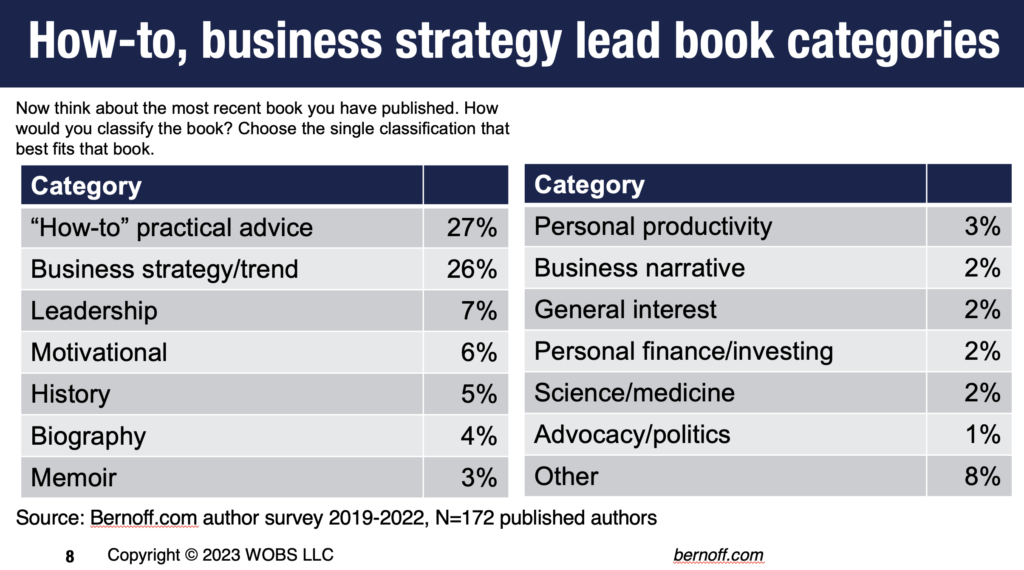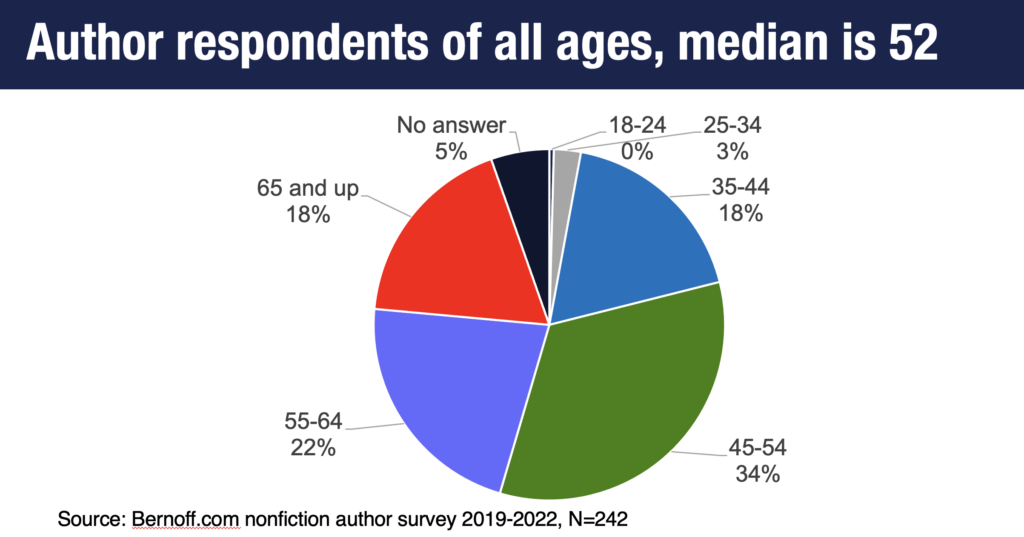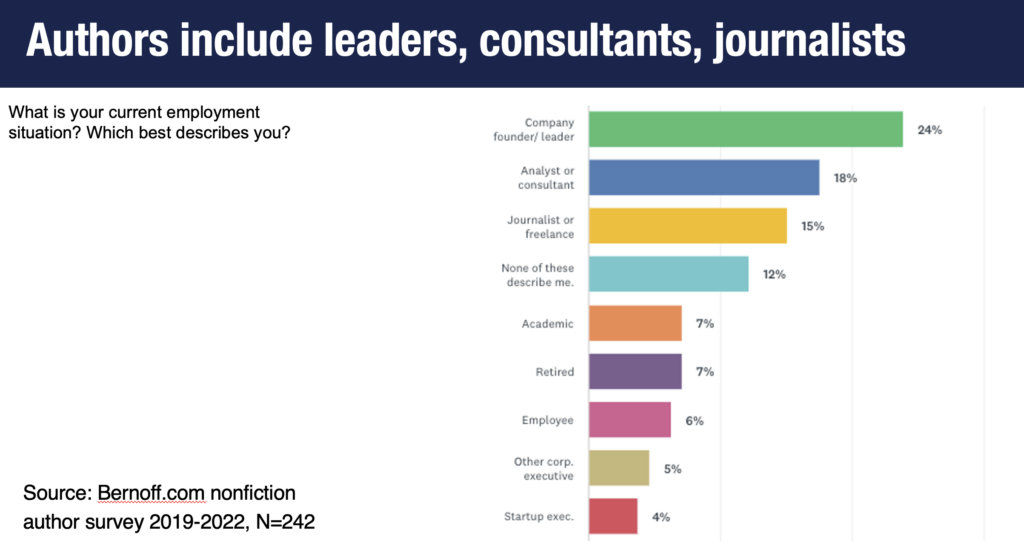How do you fit with the nonfiction authors in my author survey?
In the next several weeks I’ll be sharing lots of data from my 242-person survey of business and nonfiction authors. (All the key data is also available in my new book, of course.) So I want to be clear about where that data came from.
The reason for this post is to enable you to have context for the survey data you’ll be reading. I also hope to reveal a little of the diversity of all the folks who self-identify as business authors.
In assembling this survey, I spread as broad a net as I could, but of course, it is biased towards people in my list of connections. I wanted to reach a sample large enough to be interesting, but with real authors committed to answering the survey truthfully. To be qualified to take the survey, respondents needed to be a published author or actively working on a book. Of the 242 people who completed the survey between 2019 and 2022:
- 28% came from from the predecessor to this blog, Without Bullshit.
- 38% came from 13 different agencies and publishers who shared survey link
- 25% came from Facebook author groups I was a part of
- 5% came from responses to my personal emails
- 3% came from Twitter
- 1% came from a link in Jane Friedman’s publishing newsletter, “The Hot Sheet”
Authors’ books fit a variety of categories
How-to and business strategy books were popular categories for my respondents, but they wrote a wide variety of different types of books. (This list includes only the 172 authors who’d already published a book.)

Respondents were predominantly white Americans, with a nearly even gender split
Demographically, respondents were typical of business book authors in general.
- My authors were 86% were American, 10% Canadian, 3% European, and 1% Australian. The US remains at the center of the world of business books, but I think my survey overindexed on Americans. There are also doubtless a lot of influential authors in China and other Asian countries, but they’re generally outside of my audience.
- Respondents were 90% white, 3% Latino/Hispanic, 5% Asian, and 1% Black. This almost certainly over-represents white authors. Many of the most influential business authors are Asian, and Blacks certainly represent more than 1% of the author population.
- The balance was 54% male, 45% female. In general, business authors are more likely to be male, but women authors are increasingly on par with men in terms of influence and representation.
Respondents’ median age was 52
There was a time when only the most experienced business thinkers could get a book published. But the industry’s appetite for insights from younger entrepreneurs, along with self-publishing models that are now accessible to everyone, has opened the business publishing field to younger authors. While 40% of the authors in my survey were 55 or older, there were plenty of younger authors, too.

Most authors were company leaders, analysts, consultants, journalists, of freelancers
Below is the distribution of job classifications of the authors in my survey. Business book editors will tell you this is typical: “thought leaders” tend to come from the ranks of corporate leaders, independent consultants, freelancers, and journalists.

Do you see yourself here?
My objective in this survey was to reach a sample representative of the types of people who could benefit from my experience and from each others’. If you’re a white, American male in your 50s, leading a company or making your living as a consultant, with a “how-to” or business strategy book idea, then I’ve reached a bunch of people like you. But I always try to reach further for diversity — my book is full of stories of women authors, Asian authors, and black authors, including people who wrote history books, science books, and even memoirs.
What I found is that for nonfiction authors who want to create influence, there are a universal set of problems around ideas, publishing models, research, writing, and especially, assembling useful stories. So even if you don’t see yourself smack in the center of my survey, I hope that the insights I’ve assembled will help you.